10 Highest Dividend Stocks to Invest In
Last Update: June 2nd, 2024
The 10 Highest Dividend Stocks to Invest In revealed. We have researched various stocks from prominent companies to find the 10 that currently pay the highest dividends to shareholders.
In this in-depth guide, you’ll learn:
✅What Dividend Stocks Are
✅The 10 Highest Dividend Stocks to Invest in
✅The Benefits of Dividend Investing
✅How Dividends Contribute to Overall Return
✅Our Conclusion on the Highest Dividend Stocks To Invest in
✅Popular FAQs about the Highest Dividend Stocks To Invest in
and much, MUCH more!
| Broker | Review | Regulators | Min Deposit | Website | |
| 🥇 |  | Read Review | ASIC, FSA, CBI, BVI, FSCA, FRSA, CySEC, ISA, JFSA | USD 100 | Visit Broker >> |
| 🥈 |  | Read Review | CBCS, CySEC, FCA, FSA, FSC, FSCA, CMA | USD 10 | Visit Broker >> |
| 🥉 |  | Read Review | FSCA, CySEC, DFSA, FSA, CMA | USD 0 | Visit Broker >> |
| 4 |  | Read Review | SFSA, FSCA, CySec* | USD 5 | Visit Broker >> |
| 5 |  | Read Review | FCA, CySEC, FSCA, SCB | USD 100 | Visit Broker >> |
| 6 |  | Read Review | FCA, FINMA, FSA, ASIC | USD 0 | Visit Broker >> |
| 7 |  | Read Review | CySEC, FCA, FSA, FSCA, Labuan FSA | USD 100 | Visit Broker >> |
| 8 |  | Read Review | Not Regulated | 0.001 BTC | Visit Broker >> |
| 9 |  | Read Review | ASIC, CySEC, FSCA, CMA | USD 100 | Visit Broker >> |
| 10 |  | Read Review | SVGFSA | USD 5 | Visit Broker >> |

10 Highest Dividend Stocks to Invest In – a Comparison
| 🔍 Stock | 🫴🏻 Highest Dividend Stock | ➡️ Dividend Rate | 👉 Dividend Yield |
| 🥇 Altria Group (MO) | ✅ Yes | 3.92 USD | 9.63% |
| 🥈 AT&T (T) | ✅ Yes | 1.11 USD | 6.69% |
| 🥉 Verizon (VZ) | ✅ Yes | 2.66 USD | 6.54% |
| 🏅 IBM (IBM) | ✅ Yes | 6.64 USD | 3.58% |
| 🎖️ AbbVie (ABBV) | ✅ Yes | 6.20 USD | 3.48% |
| 🏆 Prudent Financial (PRU) | ✅ Yes | 5.20 USD | 4.86% |
| 🥇 Philip Morris International (PM) | ✅ Yes | 5.20 USD | 5.75% |
| 🥈 ExxonMobil (XOM) | ✅ Yes | 3.80 USD | 3.65% |
| 🥉 Intel (INTC) | ✅ Yes | 0.50 USD | 1.16% |
| 🏅 Procter & Gamble (PG) | ✅ Yes | 3.76 USD | 2.34% |
10 Highest Dividend Stocks to Invest In (2024)
- ☑️Altria Group (MO) – Overall, the best Highest Dividend Stock to Invest In
- ☑️AT&T (T) – Known for its Generous Dividend Pay-Outs
- ☑️Verizon (VZ) – Highly Competitive Stable Telecommunications
- ☑️IBM (IBM) – Leading Technology Company
- ☑️AbbVie (ABBV) – Dependable and Escalating Dividends
- ☑️Prudent Financial (PRU) – Established a Legacy of Financial Reliability
- ☑️Philip Morris International (PM) – Financial Steadiness and Dedication
- ☑️ExxonMobil (XOM) – Prioritizes Value for Investors in Various Market Conditions.
- ☑️Intel (INTC) – Leader in the Semiconductor Industry
- ☑️Procter & Gamble (PG) – Has a Worldwide Brand Presence
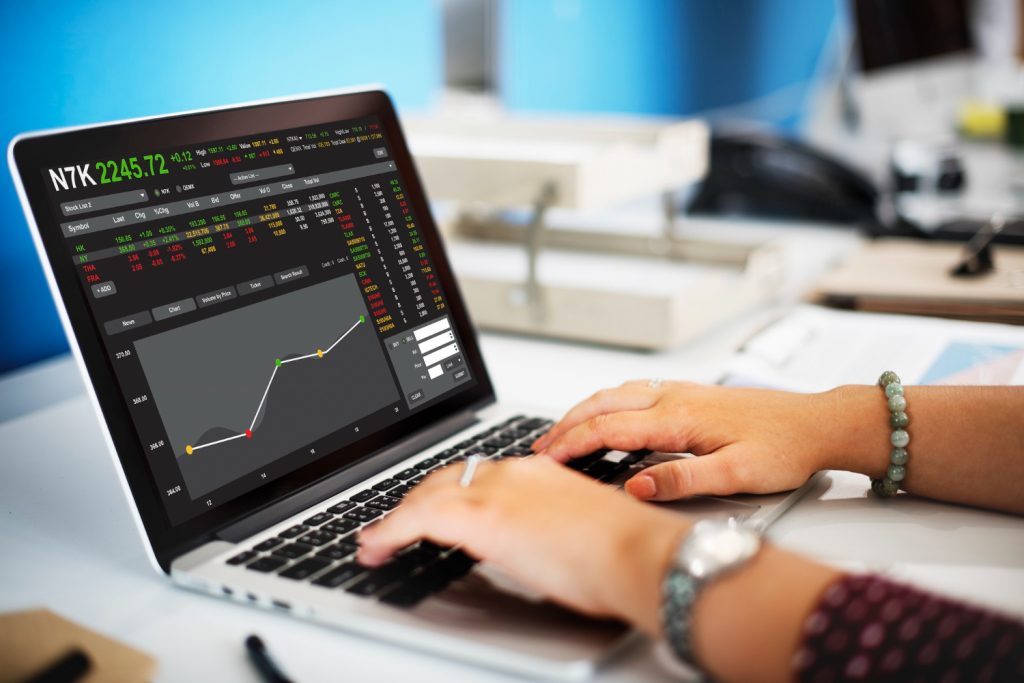
What Are Dividend Stocks?
Shares of companies that distribute a portion of their earnings to shareholders regularly are known as dividend stocks. Such pay-outs, commonly called dividends, offer investors reliable income alongside potential capital gains from stock price appreciation.
Dividend-paying firms tend to be well-established and profitable, with an extensive history of delivering shareholder returns. Investors favor this type of investment because it can furnish steady revenue while reflecting the corporation’s financial robustness and lasting stability.
As such, these shares are essential in diversifying one’s investment portfolio for balanced prospects, offering expansion possibilities and current cash flow opportunities.

Altria Group (MO)
Dividend Yield vs. Dividend Growth
The Altria Group is committed to rewarding its shareholders with an impressive forward annual dividend rate of $3.92 and a future annual dividend yield of 9.63%.
The company’s high payout ratio of 77.58% reflects its dedication to delivering wealth, indicating that it balances maintaining sufficient earnings for business operations while consistently paying out dividends to investors.
Company Financial Health
According to Altria Group’s financial reports, the company generated a robust operating income of $12.318 billion in the latest fiscal year and earned $8.76 billion from continuing operations net income.
The corporation recorded an impressive total revenue figure of $24.483 billion along with a gross profit amounting to $14.284 billion as well, reinforcing its sound financial standing and ability to yield substantial earnings through its various enterprises

Industry Stability and Growth Prospects
Altria is active in the consumer defensive industry, primarily in tobacco. Although facing legal and health-related challenges, Altria has expanded its product line into safer alternatives and foreign markets.
The constancy of demand for tobacco and growth opportunities elsewhere suggests a favorable business climate for Altria.
Historical Dividend Performance
Investors seeking income-producing assets will find the history of Altria’s consistent dividend payments appealing.The company reflects its commitment to maintaining and increasing dividend payouts through its dividend yield and growth metrics.
Moreover, with a steady payout percentage over time, investors can expect that this dividend approach is oriented toward long-term profitability.

AT&T (T)
Dividend Yield vs. Dividend Growth
With a dividend rate of $1.11, AT&T is projecting an attractive 6.69% annual dividend yield that may be especially appealing to investors seeking income-oriented opportunities.
However, it is essential for potential shareholders to also take into account the company’s past track record of modifying its dividend policy, as evidenced by a pay-out ratio of 46.06%.
Adapting their approach aligns with AT&T’s strategic objectives and capital allocation plan while maintaining caution towards growing dividends over time in favor of fiscal prudence.
Company Financial Health
The company’s financial results for the latest fiscal period showed total sales of $122.428 billion, gross profit of $53.528 billion, and operating income of $24.654 billion. The net income from ongoing operations reached $15.623 billion, indicating strong performance.
However, the company’s significant leverage and interest expense of $6.704 billion and long-term debt of $127.854 billion warrant scrutiny.

Industry Stability and Growth Prospects
The communication services industry, namely telecom services, is vital to modern society and the digital economy. In this competitive sector with high capital expenses, AT&T prevails as a key player.
With an ongoing demand for enhanced telecommunications infrastructure and service offerings coupled with their expansion into entertainment and media sectors, steady yet measured growth opportunities exist for AT&T.
Historical Dividend Performance
AT&T, known for its generous dividend pay-outs, is undergoing revisions due to strategic shifts, including divestitures and debt reduction, aiming to foster sustainable growth and balance shareholder rewards with financial resilience, despite its traditional appeal to dividend-focused investors.

Verizon (VZ)
Dividend Yield vs. Dividend Growth
Verizon ensures its stockholders receive a reliable income with a forward annual dividend rate of $2.66, resulting in an impressive 6.54% yield. This approach illustrates the company’s dedication to consistently sustaining profitable returns for investors.
Moreover, Verizon maintains an equilibrium between distributing profits and allocating funds towards future investments and debt management through its pay-out ratio of 55.94%.
Company Financial Health
Verizon’s recent fiscal report shows a strong performance. With total revenue exceeding $133 billion, gross profit exceeding $79 billion, and operating income exceeding $22 billion.
However, the company’s high-interest expenditure and substantial long-term debt suggest a reliance on leverage. A common issue in the capital-intensive telecommunications sector.
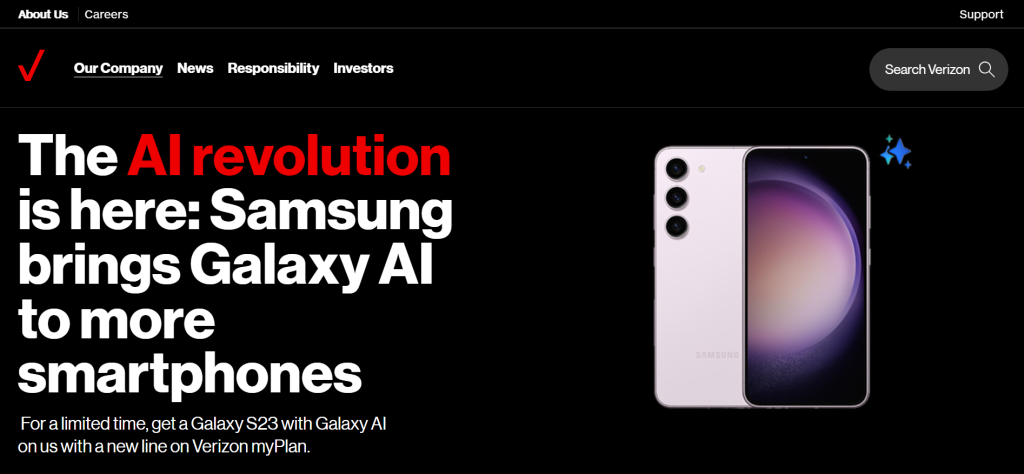
Industry Stability and Growth Prospects
Verizon operates in a highly competitive yet stable telecommunications industry. The demand for constant connection and data services and the integration of 5G technology presents growth opportunities.
Nevertheless, some obstacles must be addressed, such as regulatory limitations and considerable financial investments required to maintain or expand infrastructure facilities.
Historical Dividend Performance
Verizon’s track record of distributing dividends and consistent increases in those payments over time make it an attractive choice for investors seeking regular income.
By maintaining stable dividend pay-out ratios, Verizon demonstrates financial prudence and a commitment to maximizing shareholder returns.

IBM (IBM)
Dividend Yield vs. Dividend Growth
IBM boasts a favorable forward annual dividend yield of 3.58%, with an impressive annual dividend rate of $6.64, indicating its dedication to furnishing steady returns for its shareholders and remaining competitive in the market.
The payout ratio stands at 69.09%, underscoring IBM’s prudent approach towards achieving equilibrium between reinvesting cash into the business and rewarding investors with dividends over time.
Company Financial Health
IBM’s fiscal results show financial robustness, with total revenue reaching $61.86 billion, gross profit at $34.3 billion, and operating income at $7.514 billion. Net income from ongoing operations reached $7.099 billion, indicating strong operational performance.
However, the $1.607 billion interest expenditure and lack of long-term debt data suggest a need for a more nuanced analysis.

Industry Stability and Growth Prospects
IBM, a leading technology company, focuses on artificial intelligence, cloud computing, and cybersecurity, aligning with current trends and expectations. However, its competitive structure and high rate of innovation pose challenges in the rapidly evolving technology sector.
Historical Dividend Performance
With a long track record of disbursing dividends, IBM is an attractive option for investors seeking regular payouts. Its continually improving dividend payments indicate its financial strength and unwavering commitment to enhancing shareholder worth.

AbbVie (ABBV)
Dividend Yield vs. Dividend Growth
With a forward annual dividend rate of $6.2 and a yield of 3.48%, AbbVie displays its dedication to rewarding shareholders, which is quite enticing.
Additionally, the payout ratio of 53.92% signifies an inclination towards striking a balance between investing in the company for long-term gains and paying out dividends consistently over time.
Company Financial Health
AbbVie’s fiscal year results showed financial strength, with total sales reaching $54.318 billion and gross profit reaching $45.538 billion.
Operating income was $17.425 billion, indicating operational excellence. However, significant interest expenditure of $1.669 billion and long-term debt of $52.194 billion suggest AbbVie’s reliance on leverage, a common pharmaceutical industry phenomenon.
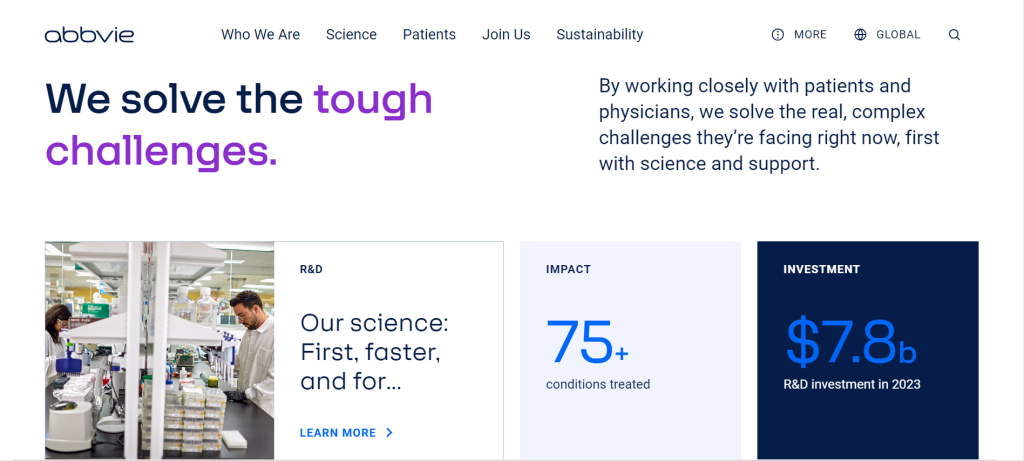
Industry Stability and Growth Prospects
Within healthcare, AbbVie stands out as a leading force, channeling its expertise into pioneering treatments designed to combat serious and persistent ailments like cancer, immunological disorders, and viral infections.
Despite the pressing need for such advancements, the company faces ongoing challenges posed by fierce market rivalry and regulatory requirements, although these obstacles also signal promising avenues for growth.
Historical Dividend Performance
Dividend investors find AbbVie attractive due to its track record of issuing dependable and escalating dividends. The regular augmentation in dividend payouts highlights the firm’s financial soundness and unwavering commitment to creating shareholder value.

Prudent Financial (PRU)
Dividend Yield vs. Dividend Growth
Prudential Financial boasts a front annual dividend rate of $5.2. Alongside an impressive 4.86% yield – evidence of its unwavering dedication to rewarding shareholders via dividends.
The company maintains a sensible payout ratio of 43.46%. Divvying earnings to investors while driving future business growth through reinvestment initiatives.
Company Financial Health
Prudential’s fiscal year data shows a total revenue of $54.265 billion and a gross profit of $2.508 billion despite a slightly negative operational income of -$116 million.
The company’s net income from continuing operations reached $2.508 billion, indicating sustained profitability despite operational challenges. However, the company’s financial landscape includes $1.766 billion in interest expenditure and a $20.001 billion long-term debt load.
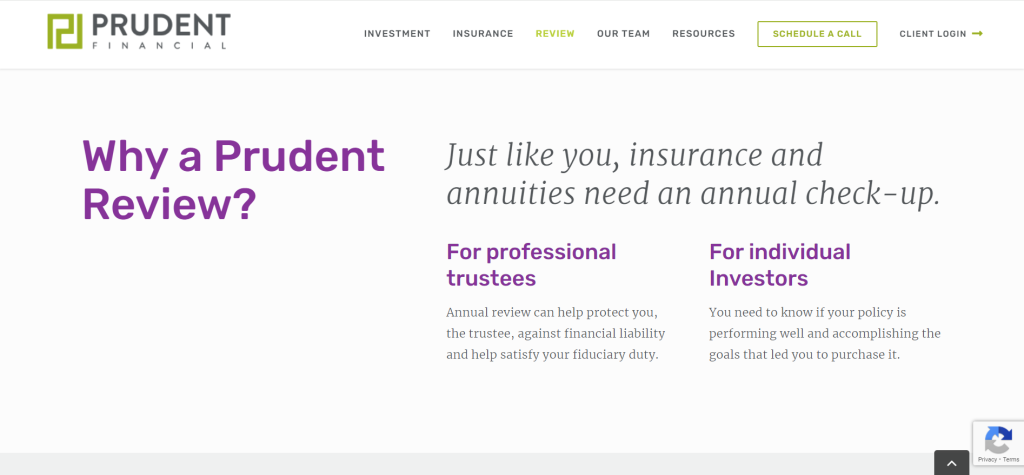
Industry Stability and Growth Prospects
Prudential is a major financial services industry contender specializing in life insurance. Despite potential vulnerability to shifts in legislation and economic cycles within this sector, it operates sustainably due to consistent demand.
Prudential enjoys stability thanks to its wide range of offerings and global reach, setting it up for success across both established markets and emerging ones with growth prospects.
Historical Dividend Performance
With its consistent dividend payments, Prudential has established a legacy of financial reliability and commitment to rewarding its shareholders.
The company’s sustained high yield capacity and ingrained shareholder-oriented outlook signifies unwavering devotion towards generating wealth for the investors.

Philip Morris International (PM)
Dividend Yield vs. Dividend Growth
With a forward dividend yield of 5.75 percent and an annual dividend rate of $5.2, Philip Morris International showcases its dedication to enriching shareholders’ wealth through generous payouts.
However, the substantial payout ratio of 85.52% implies that much profit is channeled towards dividends with limited reinvestment opportunities for growth prospects in the company’s future advancement efforts.
Company Financial Health
Philip Morris International’s fiscal year saw total sales of $35.174 billion, a gross profit of $22.281 billion, and operating income of $11.556 billion. The company’s net income from ongoing operations was $8.268 billion, indicating operational strength.
However, significant figures like a $1.526 billion interest expense and $41.243 billion long-term debt highlight the need for monitoring the company’s leverage.
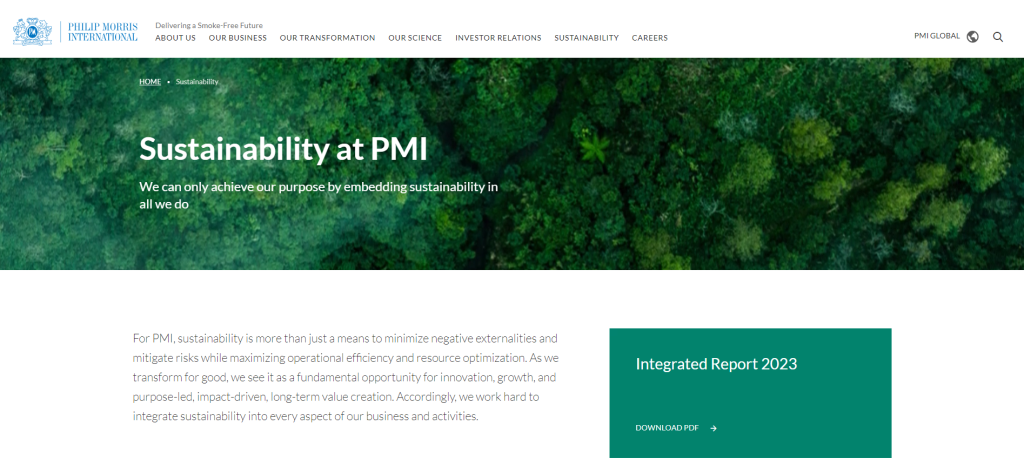
Industry Stability and Growth Prospects
Philip Morris International, a major player in the consumer defensive industry, has strategically prioritized reduced-risk products (RRPs).
This includes their IQOS line, to overcome regulatory obstacles and evolving customer preferences for healthier lifestyles, capitalizing on development prospects in the evolving tobacco sector.
Historical Dividend Performance
By consistently paying dividends, Philip Morris International affirms its financial steadiness and dedication to rewarding shareholders. Despite the obstacles posed by the worldwide tobacco market, it remains devoted to maximizing shareholder benefit through a high dividend payout ratio.

ExxonMobil (XOM)
Dividend Yield vs. Dividend Growth
ExxonMobil anticipates a 3.65% yearly dividend yield and $3.8 dividend rate, demonstrating its commitment to shareholder wealth. With a payout ratio of 39.08%, the company ensures equitable profit distribution and sufficient revenues for future ventures and operational needs.
Company Financial Health
Throughout its fiscal year, ExxonMobil showcased a formidable financial display, recording total sales of $334.697 billion. Within this, the gross profit amounted to $83.391 billion. Operating income reached $44.461 billion, and net income tallied at $36.01 billion.
A notable highlight includes the company’s commendable performance in the energy industry. Underscored by its negligible long-term debt and a modest interest expenditure of $849 million, indicative of a resilient financial framework.
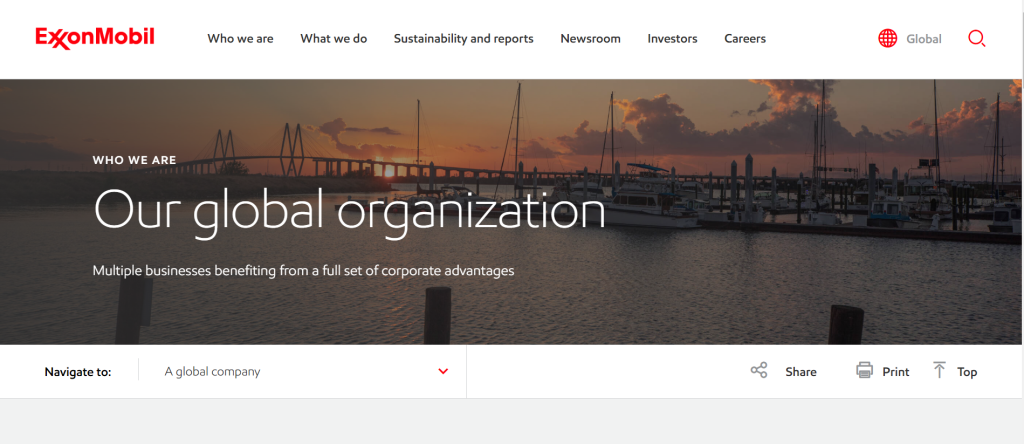
Industry Stability and Growth Prospects
A major energy player, ExxonMobil focuses on integrated oil and gas operations for global economic activity. However, the sector faces market fluctuations, regulatory changes, and sustainable power adoption challenges.
ExxonMobil has strategically invested in advanced technologies and renewable resource exploration to tackle these and explore new growth opportunities.
Historical Dividend Performance
ExxonMobil’s extensive dividend record illustrates its financial security and commitment to providing returns for shareholders.
Their established strategy for long-term dividend growth highlights their ability to generate ongoing cash flow while prioritizing value for investors in various market conditions.

Intel (INTC)
Dividend Yield vs. Dividend Growth
Intel’s forward annual dividend yield is 1.16%, and its annual dividend rate is $0.5, indicating a commitment to shareholder returns.
However, this is lower than some tech sector rivals. With a payout ratio of 48.08%, over half of Intel’s earnings are reinvested in growth initiatives or operational necessities, prioritizing long-term expansion over short-term gains through dividends.
Company Financial Health
Intel’s recent report shows a $54.228 billion revenue stream, a $21.711 billion gross profit, and a $93 million operating income. Despite narrow operating margins, Intel secured a net income of $1.689 billion.
The company’s significant interest outlay of $760 million and substantial investments in research and development totaling $16.046 billion demonstrate its commitment to innovation and potential expansion.

Industry Stability and Growth Prospects
Intel, the leader in the semiconductor industry, faces both opportunities and challenges due to rapid advancements, intense competition, and fluctuating demand cycles.
Its strategy of expanding its product portfolio through AI, 5G networks, and autonomous vehicles aims to capitalize on future market growth. However, stiff competition from CPU and GPU-specialized rivals poses a significant obstacle.
Historical Dividend Performance
Intel has a history of consistent dividend payments, which showcases its financial stability and dedication to delivering returns to shareholders.
Although Intel’s dividend yield may not match up with other high-yield investments, it is supported by strong cash flows and an impressive balance sheet, ensuring the sustainability of dividends expected from the company.

Procter & Gamble (PG)
Dividend Yield vs. Dividend Growth
Procter & Gamble’s commitment to consistent earnings through dividends is evident through its 2.34% forward annual dividend yield and $3.76 forward annual dividend rate.
Its payout ratio of 58.7% demonstrates responsible profit distribution. While ensuring sufficient funds for future endeavors and operational requirements, emphasizing balanced allocation.
Company Financial Health
Procter & Gamble’s commitment to consistent earnings through dividends is evident. Through its 2.34% forward annual dividend yield and $3.76 forward annual dividend rate.
Its payout ratio of 58.7% demonstrates responsible profit distribution while ensuring sufficient funds for future endeavors and operational requirements, emphasizing balanced allocation.
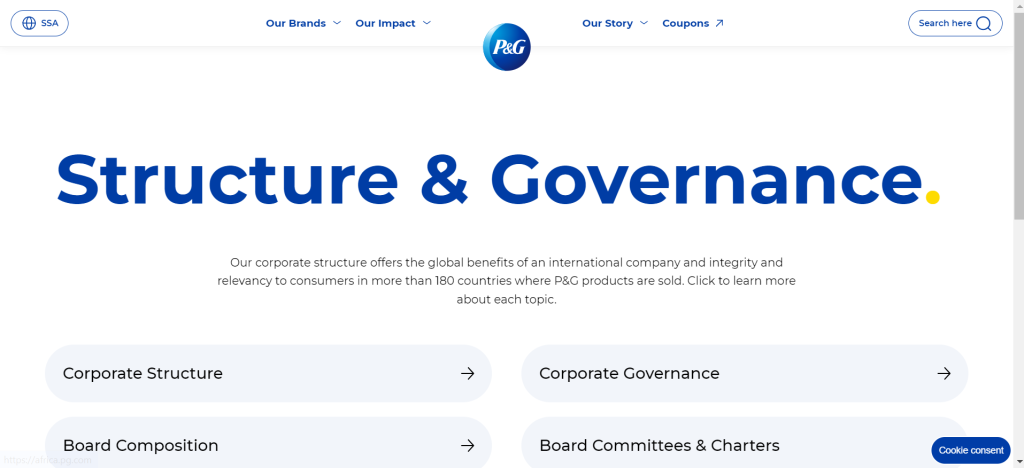
Industry Stability and Growth Prospects
Procter & Gamble, a consumer defensive sector company, focuses on household and personal items with steady demand.
With a broad product line and global brand recognition, it is well-positioned for growth. However, it faces challenges like fluctuating raw material prices and changing customer preferences.
Historical Dividend Performance
For a considerable time, Procter & Gamble has consistently provided dividends as evidence of its financial steadfastness and commitment to rewarding shareholders.
With an established strategy for consistent growth in this area, the corporation indicates ongoing capacity for generating robust cash flow while prioritizing shareholder value under diverse market circumstances.
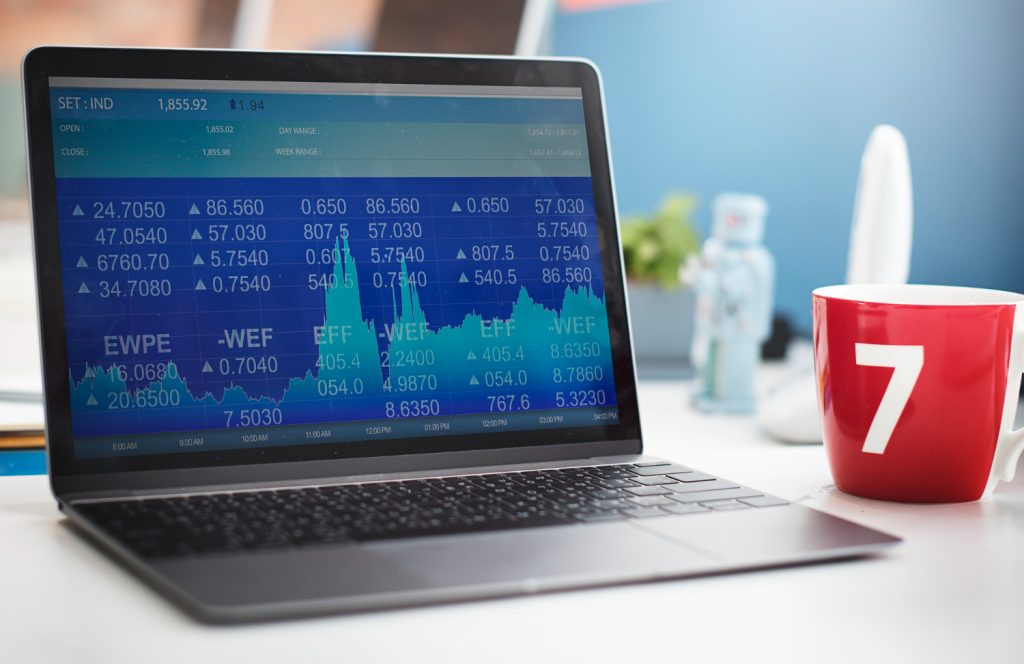
The Benefits of Dividend Investing
Investors seeking a reliable income source with potential financial rewards may find dividend investing attractive.
This investment strategy generates steady earnings, which is particularly advantageous during retirement or market turbulence when consistent returns are sought after.
Likewise, frequent dividends can signal a company’s sound fiscal condition and resilience against market fluctuations since it indicates an established cash-generating enterprise.
Dividend investing encourages long-term holding, which helps investors withstand short-term market volatility with reduced anxiety.
This approach can yield compounded returns over time. Especially when dividends are reinvested to acquire additional shares and augment the investment portfolio’s growth potential.
Additionally, dividend-paying stocks often belong to established companies that exhibit lesser fluctuations than non-dividend-paying industries. Thus supplying some safeguard amidst economic ambiguity.

In Conclusion
In our experience, searching for the highest dividend companies presents opportunities and risks. High dividend yields offer a consistent income stream, boosting portfolio performance and demonstrating financial health.
Addendum/Disclosure: No matter how diligently we strive to maintain accuracy, the forex market is volatile and may change anytime. Even if the information supplied is correct when going live.
Investor Warning: Foreign currency trading on margin is associated with an elevated risk and may not be appropriate for all South African investors.
Before engaging in foreign currency or Contract for Difference (CFD) trading, you must evaluate your investing goals, expertise, appetite for risk, and willingness to be exposed to risk. In addition, you should not start investing capital you cannot afford to lose because you could lose part of your original investment.
Frequently Asked Questions
Are high-dividend stocks a good investment?
Yes, high-dividend stocks can provide consistent income, particularly for investors looking for regular cash flow. However, they represent a greater level of risk, and it is critical to assess the company’s financial condition and dividend sustainability.
What are the top high-dividend paying stocks?
Many lists differ, but some often listed high-yield dividend stocks include: Altria Group (MO), IBM (IBM), AT&T (T), Verizon (VZ), and ExxonMobil.
How do I find reliable high-dividend stocks?
Look for firms that have a history of regular dividend payments and growth. Examine the company’s pay-out ratio (dividends/earnings) to determine whether the dividend is sustainable.
What’s the difference between dividend yield and dividend growth?
The dividend yield is the yearly dividend expressed as a percentage of the stock price, representing current income. Dividend growth refers to the rate at which dividends increase over time, suggesting future income potential.
What are the risks of investing in high-dividend stocks?
Companies with unusually high yields may indicate financial problems. When a corporation decreases its dividend, the stock price often declines.
Should I focus on yield or a company’s overall health?
No, It is best to maintain a balance. Rather than seeking the greatest yields, invest in equities from strong firms that pay lucrative dividends.
